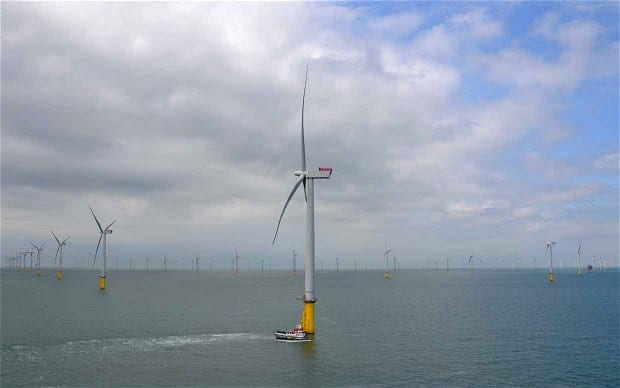A new report has shown the cost of UK offshore wind power has fallen below the joint UK Government and industry target of £100 per megawatt-hour four years ahead of schedule, putting offshore wind on target to become one of the cheapest large-scale clean energy sources.
The third annual Cost Reduction Monitoring Framework report was delivered this week by ORE (Offshore Renewable Energy) Catapult to the Offshore Wind Programme Board, showing that the levelized cost of offshore wind has fallen by 32% since 2012, and now sits under £100 per megawatt-hour (MWh), four years ahead of the scheduled target set by the UK Government with the UK’s offshore wind industry.
Specifically, offshore wind projects reaching a Final Investment Decision in 2015 and 2016 were done at an average levelized cost of electricity (LCOE) of £97/MWh, compared to £142/MWh in 2010/11.
The report also highlights that high industry confidence exists for offshore wind’s ability to continue delivering cost savings as a result of technological innovation and continued collaboration across the sector.
Additional key findings from the report include:
- Technology developments have made the largest contribution to cost reduction.
- Competition at developer level has driven down costs in the supply chain.
- Risk profile and the cost of capital is reducing as confidence in the sector develops.
- The level of UK content in projects is an increasingly important consideration for developers.
“The UK’s leadership in offshore wind clearly demonstrates that it is an attractive destination for renewable energy investment,” said UK Energy Minister, Jesse Norman. “This growing industry will be an important part of the Government’s new industrial strategy, and will be underpinned by £730 million of annual support for renewable energy over the course of this Parliament.
“Thanks to the efforts of developers, the UK’s vigorous supply chain and support from Government, renewables costs are continuing to fall. Offshore wind will continue to help the UK to meet its climate change commitments, as well as delivering jobs and growth across the country.”
The authors of the report believe that the early achievement of the cost reduction target “demonstrates that offshore wind can play a significant role in the UK’s low carbon future.” The report also provides recommendations for the Offshore Wind Programme Board:
- Ensure further cost reduction beyond 2020 and maximize UK economic benefit through an agreed set of cost reduction priorities, timescales and monitoring process for collaborative actions across the sector.
- Work with government to encourage and support investment in the UK supply chain. This should be built on a coordinated approach to industrial strategy, maximizing the supply chain synergies between fabrication, assembly, port infrastructure, operations and maintenance and other sectors.
- Identify and exploit opportunities to reduce development, consenting and deployment risk in the UK. Consider improved coordination of government policy implementation (energy and environment) and review successful policy and regulation from other European markets that could enhance the UK framework.
- Continue to work with government via the Offshore Wind Industry Council (OWIC) on plans for further CfD auction rounds and longer term visibility of the market that would enable it to achieve its maximum potential.
“Offshore wind is a big success story at the very heart of the UK’s industrial strategy,” added Benj Sykes, Co-chair of the Offshore Wind Industry Council (OWIC).
“The industry is cutting costs much faster than predicted, while creating thousands of jobs and stimulating investment nationwide.
“But this is a story that is just beginning. We remain committed to delivering further significant cost reduction, while working in partnership with Government to put in place a Sector Deal and build a sustainable industry that will benefit the UK for decades to come.
“Our industry’s goal is to be cost competitive with other generation sources, and this new data shows that ambition is realistic and that we are well on the way to achieving it.”
This story was first published on Cleantechnica. Reproduced with permission.











